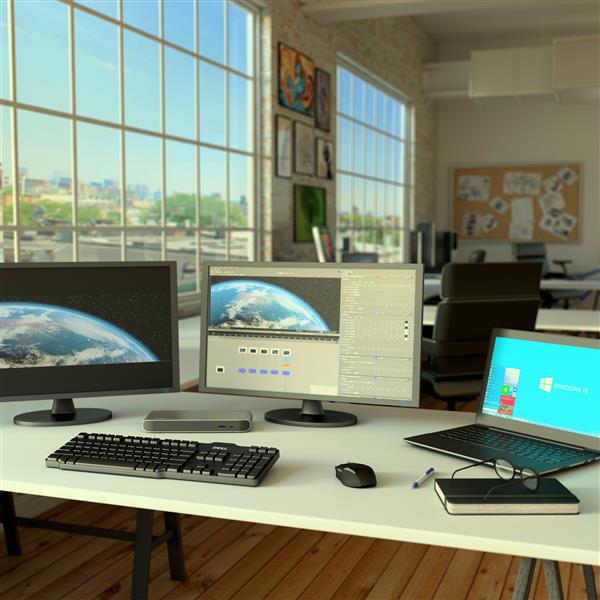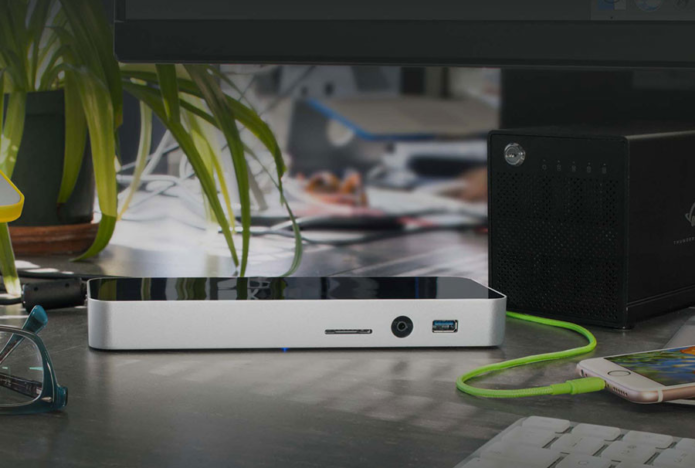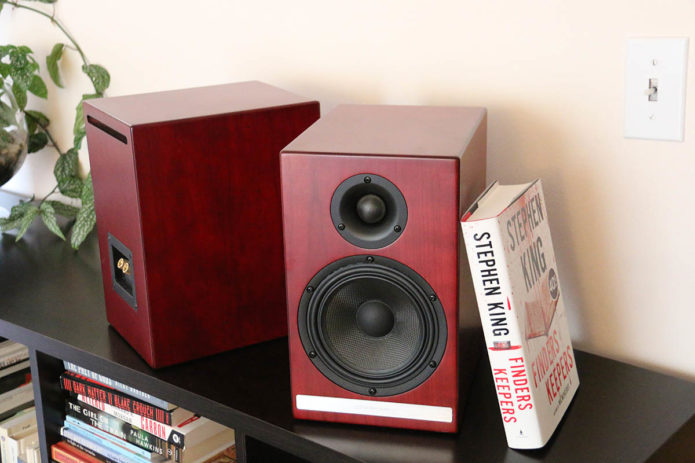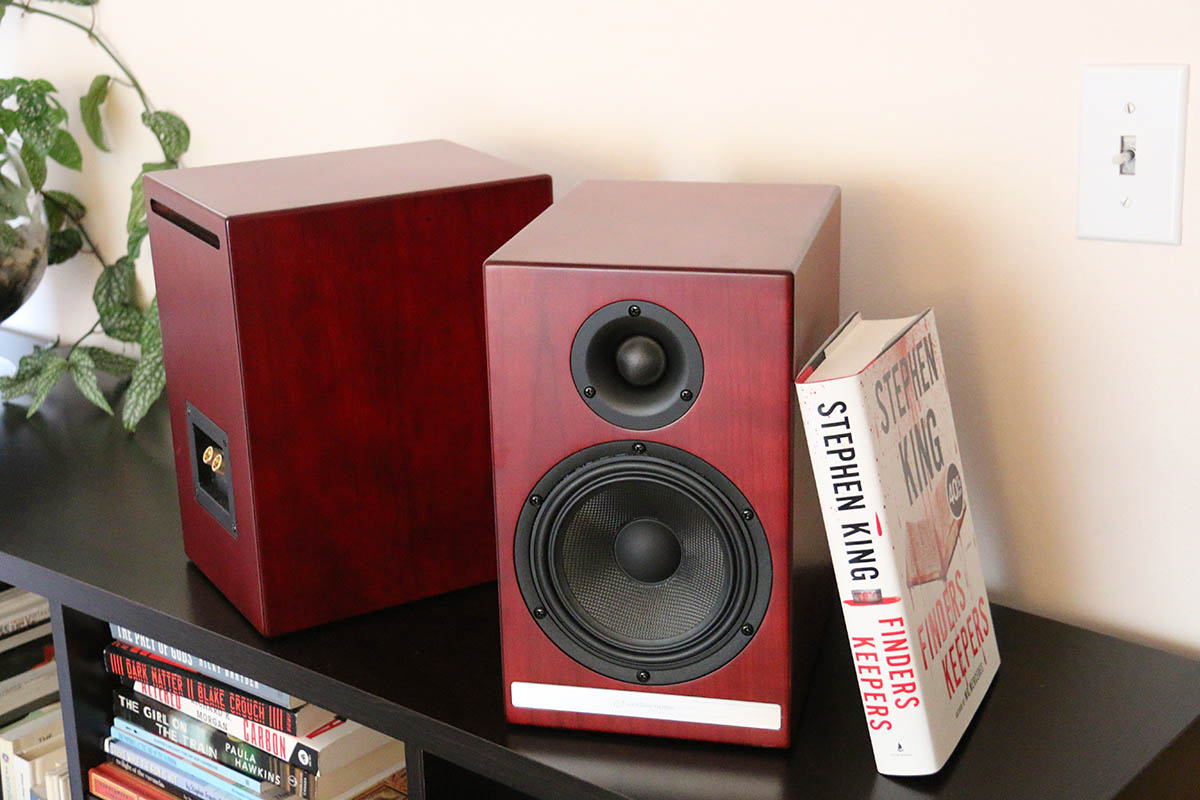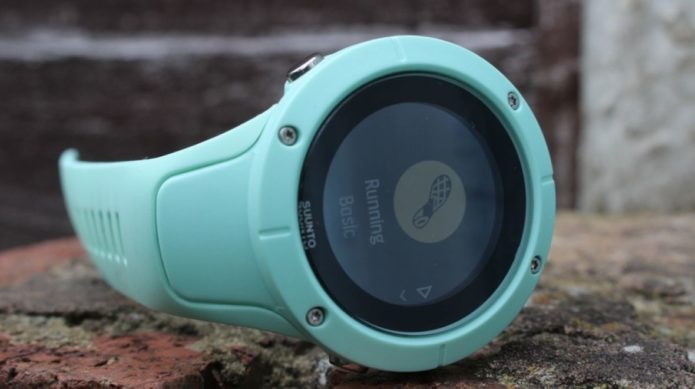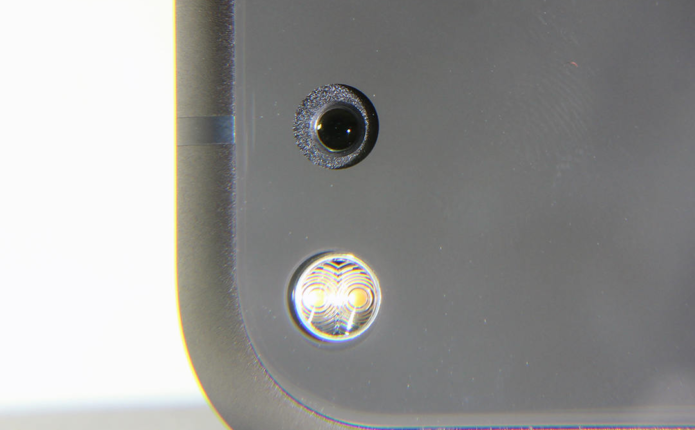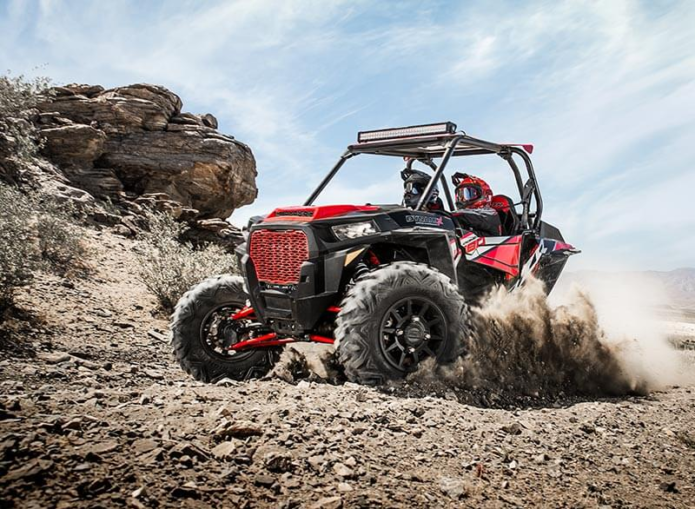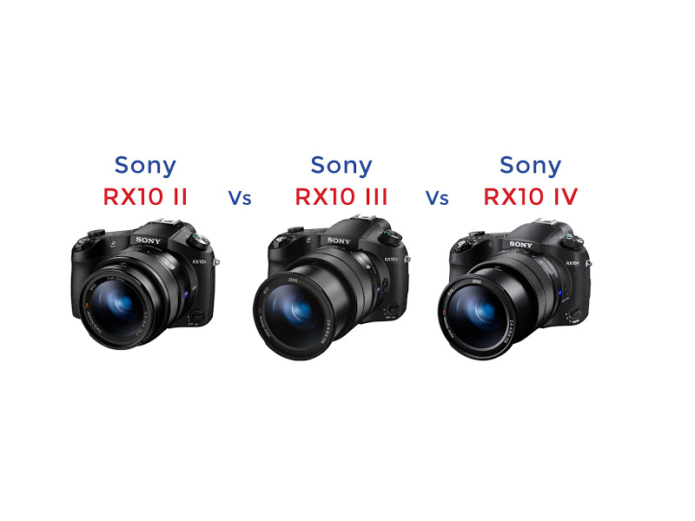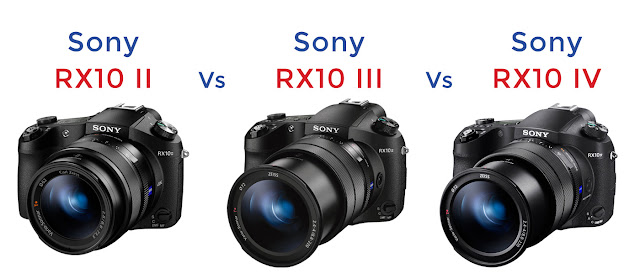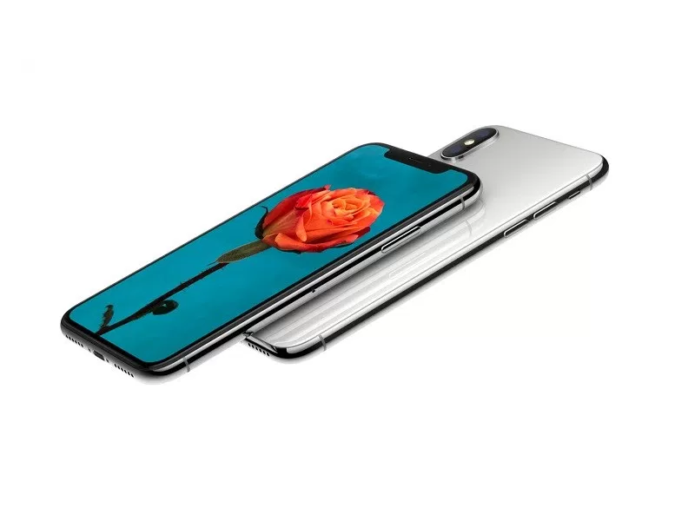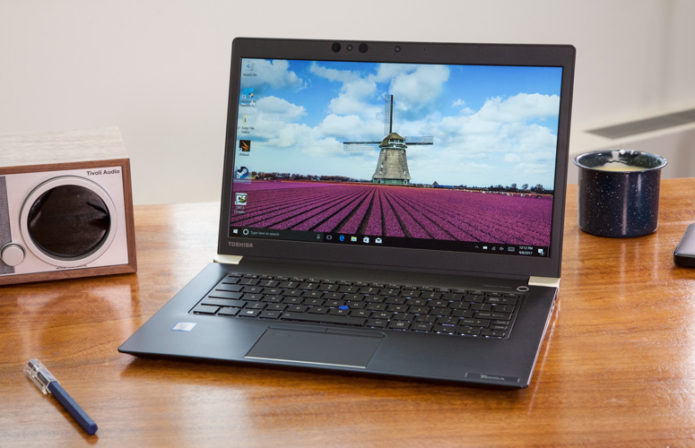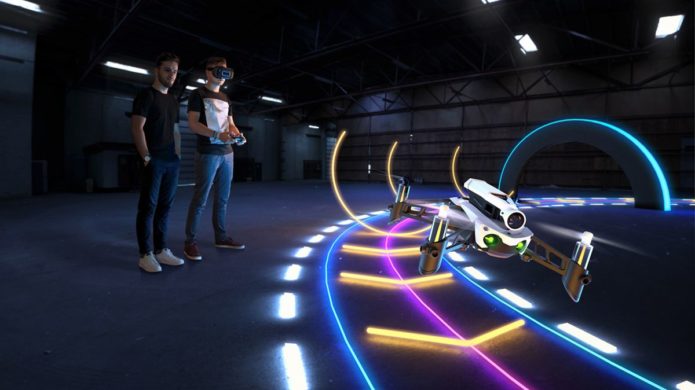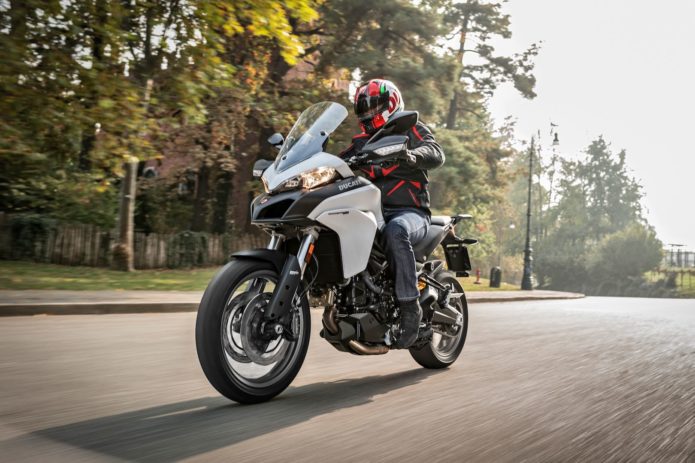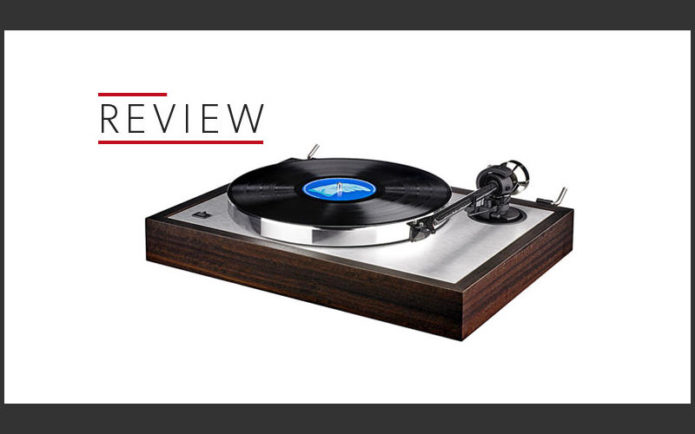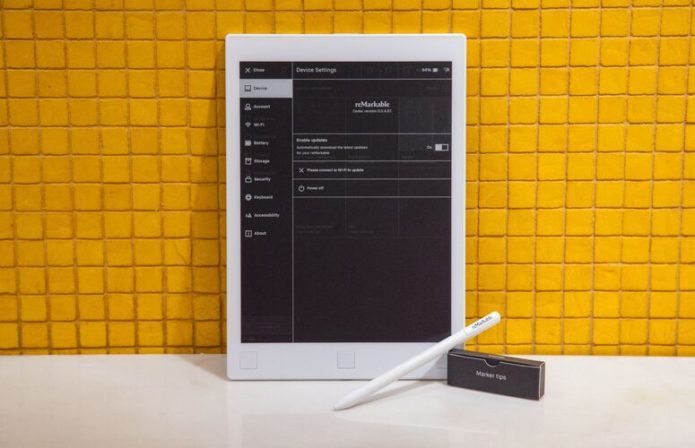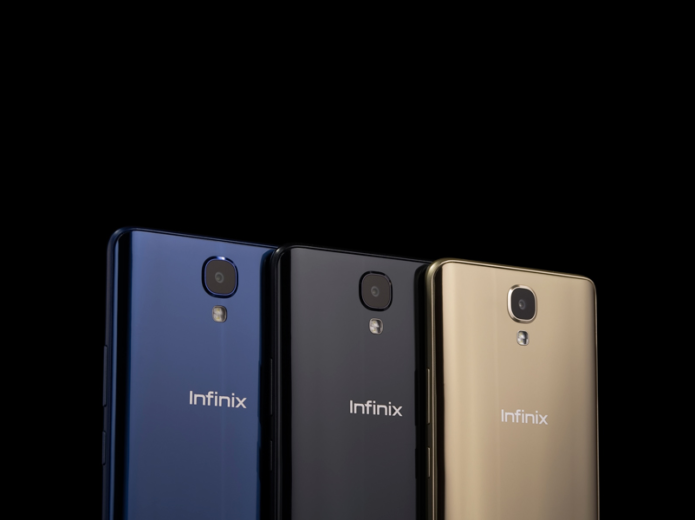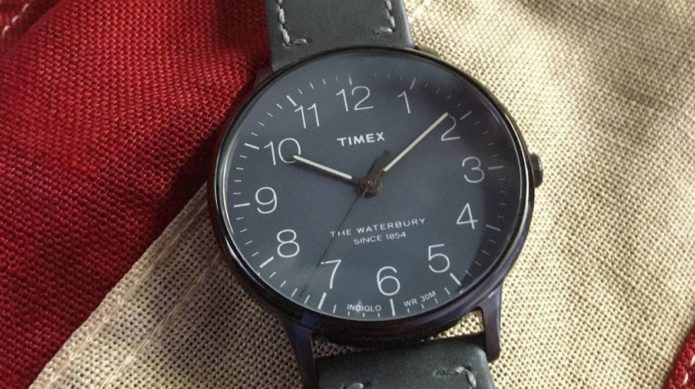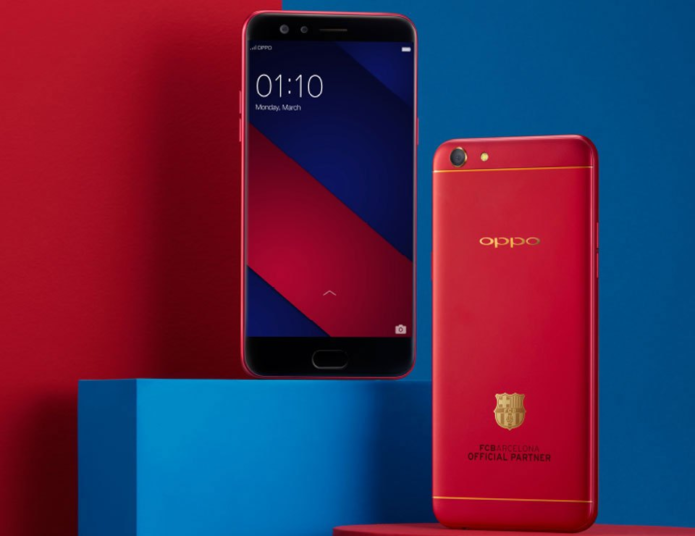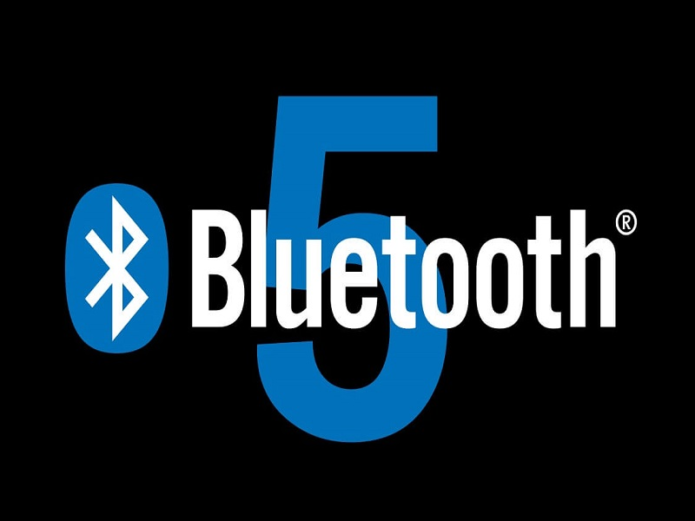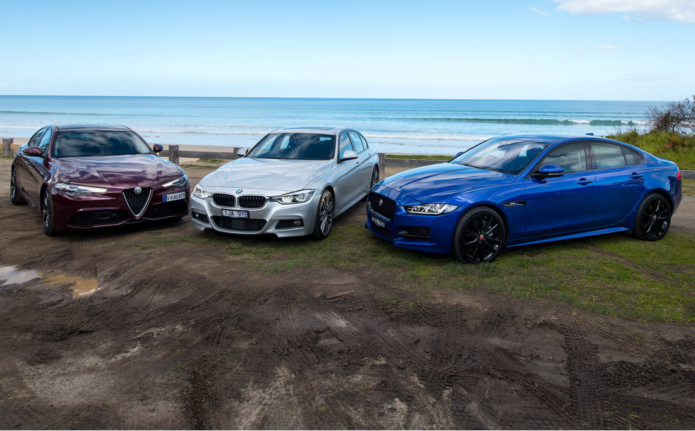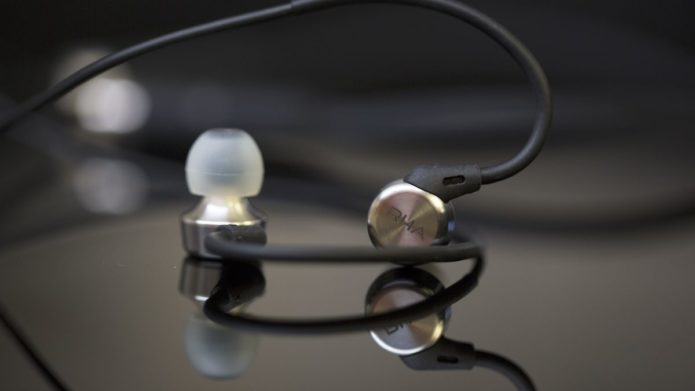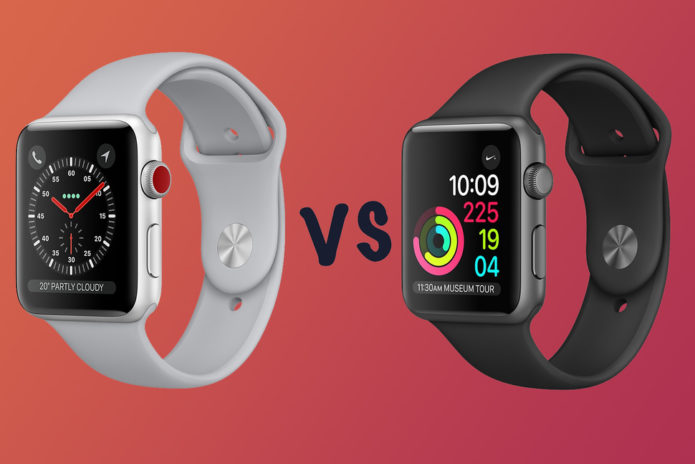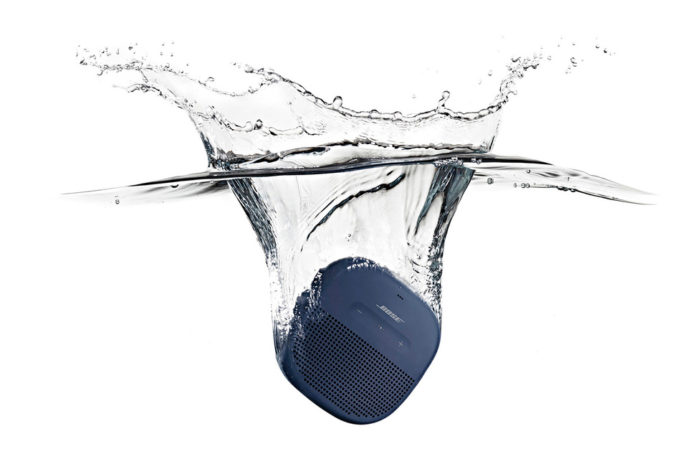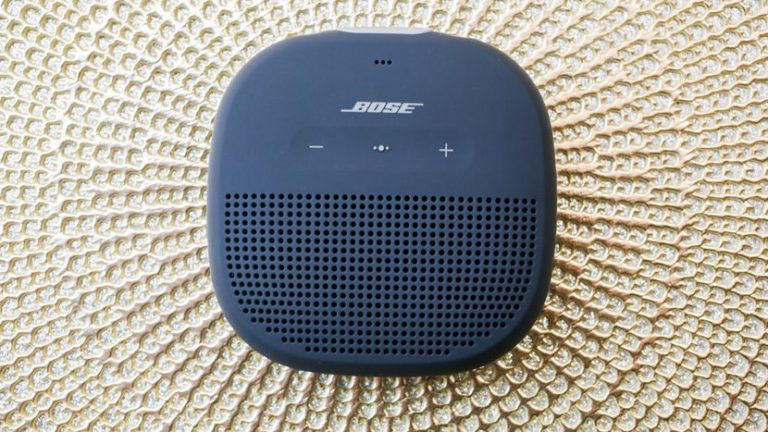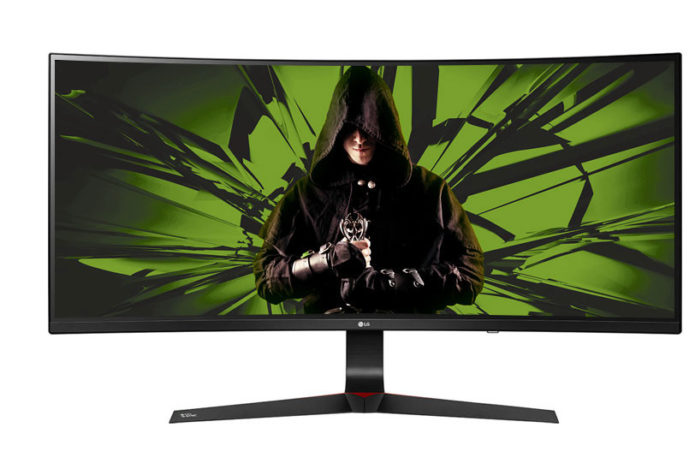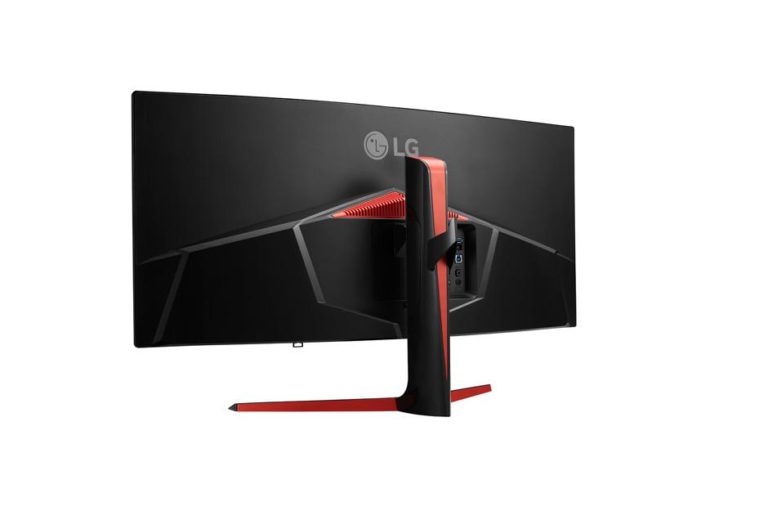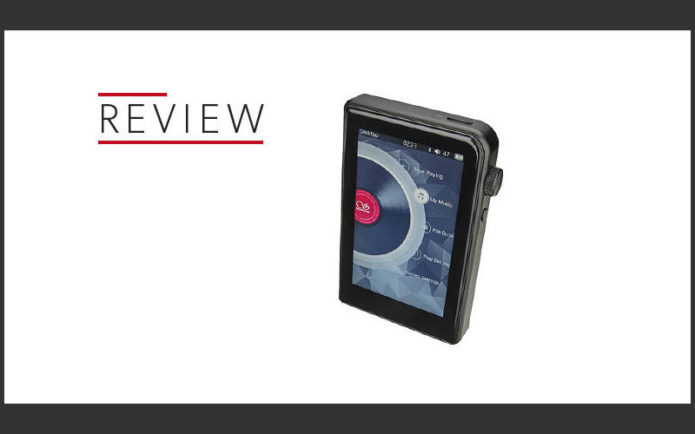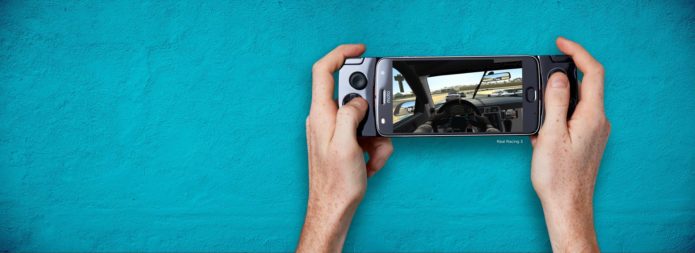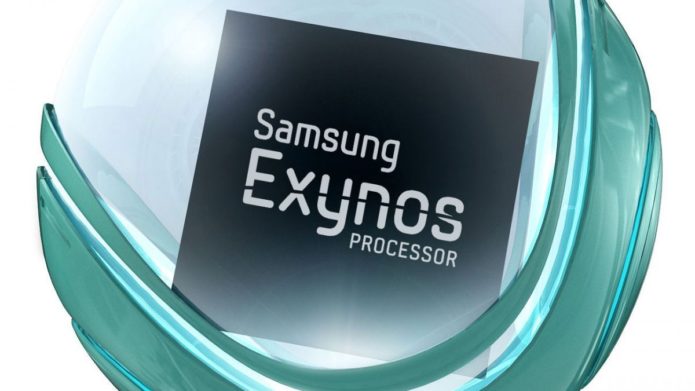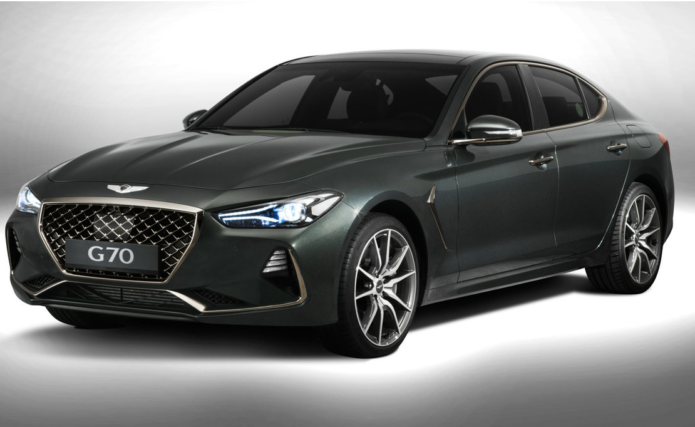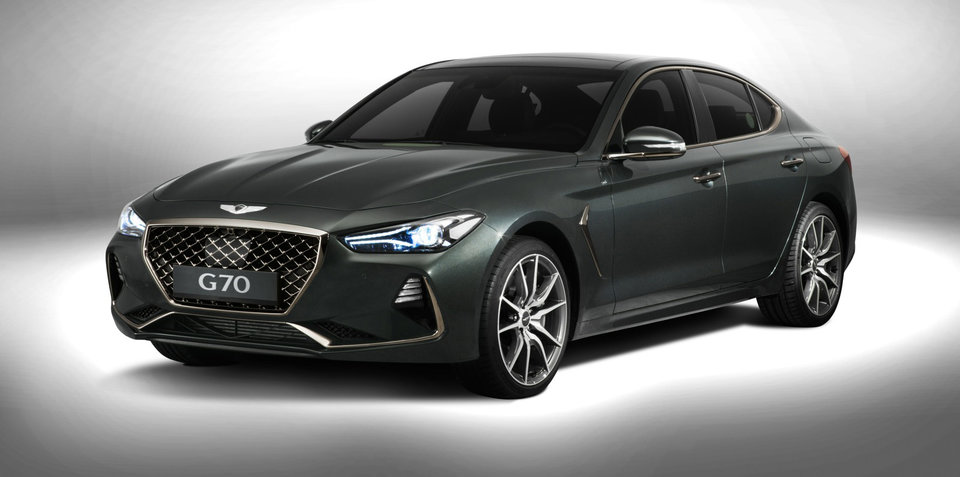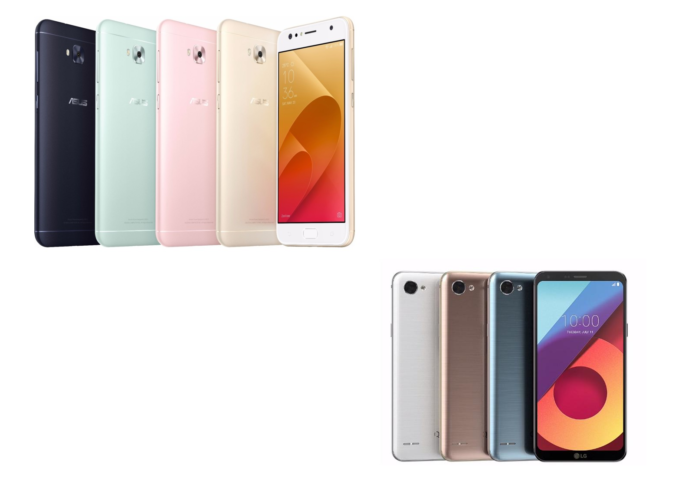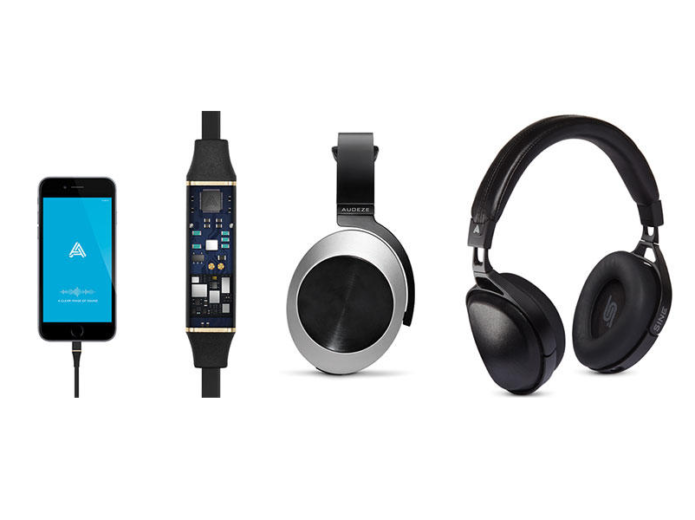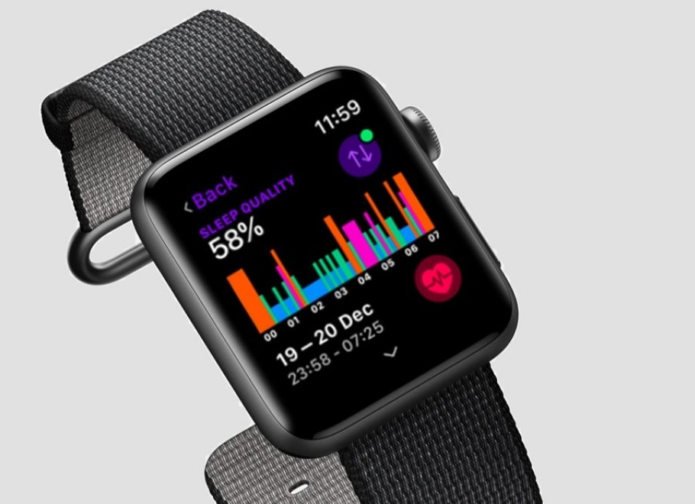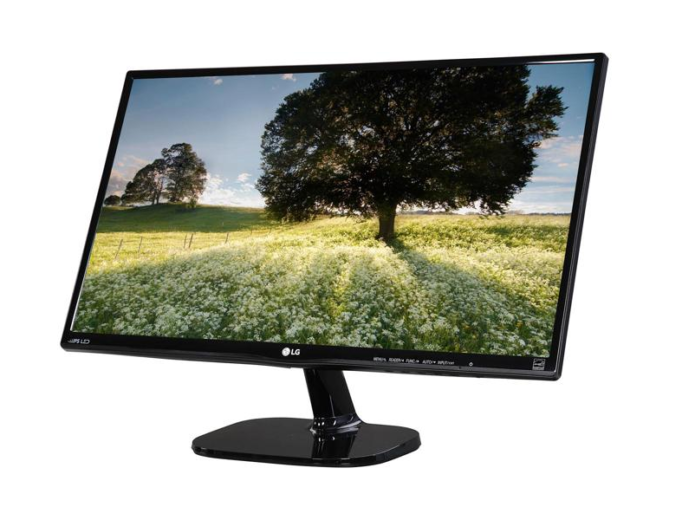Compact luxury sedans remain a vital part of the business case for any serious player in the premium car market. While luxury car-makers seek to diversify and future-proof by making small entry cars and more crossover SUVs, sedans still sit at the heart of what their makers represent.
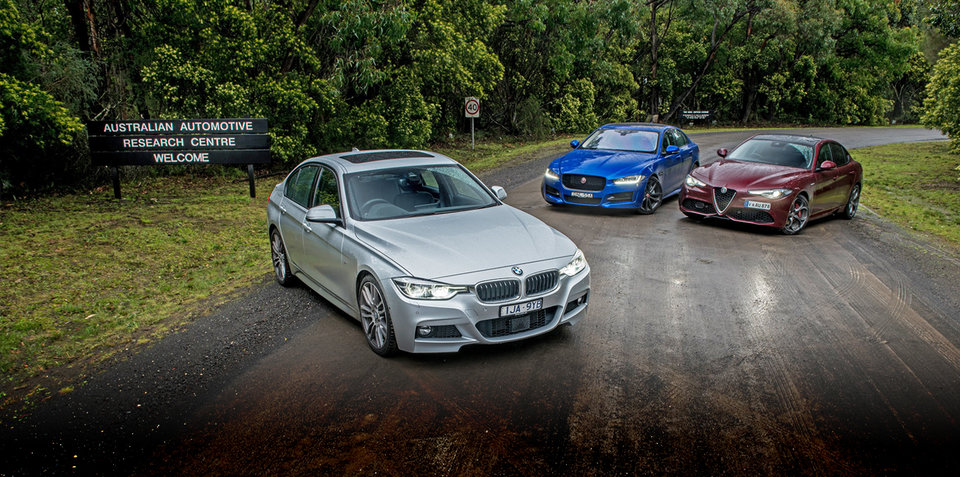
Brand loyalty aside, the BMW 3 Series is the definitive luxury compact sports sedan. Sales aren’t what they once were, but it remains a yardstick. The Audi A4 has better cabin tech and the Mercedes-Benz C-Class is more glamorous, but the Bimmer is the purist’s choice.
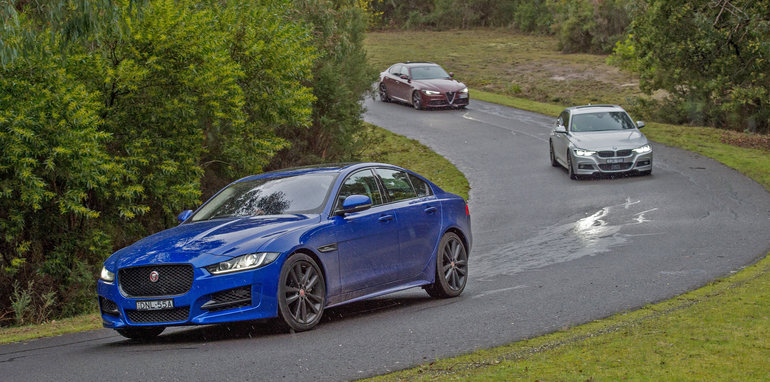
But there are two other rivals aimed at BMW’s buyer pool: the Italian Alfa Romeo Giulia Veloce and the British Jaguar XE 25t R-Sport. Both are rear-wheel drive (RWD) like the BMW, turbocharged, and about $70,000 before on-road costs and options.
However, there’s more to this story. Keen industry followers will be well aware that both the Bimmer and Jag are due for a series of updates soon – the former with iDrive 6 infotainment and the latter with a brand new JLR engine. As such, this wouldn’t usually be our preferred time to do a test of this sort. Nine times out of ten, we’d wait.
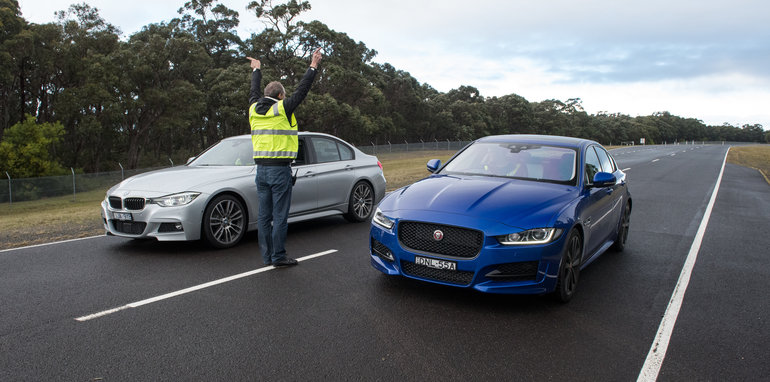
However – and this seems as good a place as any to announce it – we’ve teamed up with the Australian Automotive Research Centre (AARC) in Anglesea, Victoria, to use their proving ground facilities to help us test cars in a safer, more challenging and convenient manner.
This proving ground is situated 125km south-west of our Melbourne office, and is the largest privately-owned automotive testing facility of its kind in the country. Its facilities simulate virtually all driving conditions that you might face.
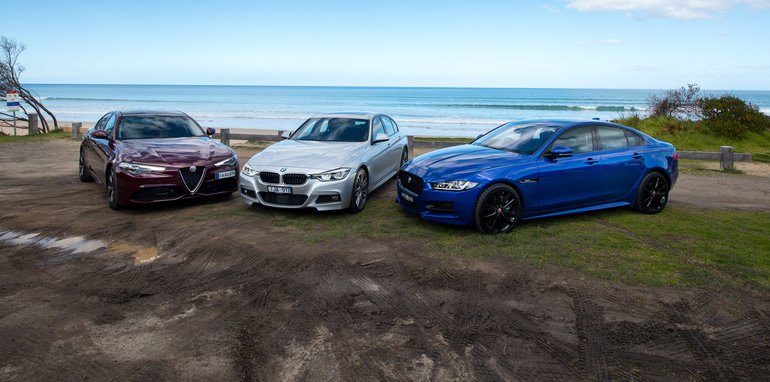
There’s a 4.2km highway circuit, a gradient section, two gravel tracks, a high-speed ring, various tiles and cobbles to test suspension, NVH test areas, and a ton of 4×4 test tracks, fording baths and more. And we weren’t going to test any old trio there as a starting point, were we?
The rationale is simple: a major challenge of doing what we do is finding the right places to conduct dynamic comparison tests. If you want to give cars a nudge, what’s the best solution?
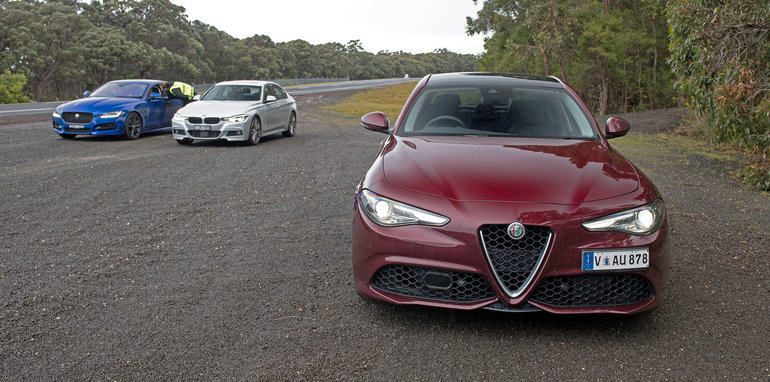
Paid track-time is great, but hardly representative to buyers of most vehicles. And public road testing can sometimes have the odd pitfall, because dynamic ‘loops’ that package all the type of surfaces we want together in an efficient sequence, with freedom to push boundaries, are rare.
Yours truly is just a writer, but co-judges Alborz (CarAdvice founder) and Andrew (CarAdvice CEO) own and love luxury cars themselves, and as such make perfect accomplices.
Start your engines.
Price and specs
The Jaguar XE 25t R-Sport currently kicks off at $68,900 before on-road costs, while the BMW 330i costs $70,900 – though we’d be keeping our eyes peeled for runout deals on both. The Alfa Romeo Giulia Veloce retails for $71,895.
Common equipment to all three cars includes AEB, cruise control with braking, lane assist, blind-spot monitoring, proximity key, navigation, ambient night-time cabin lighting and rain-sensing wipers.
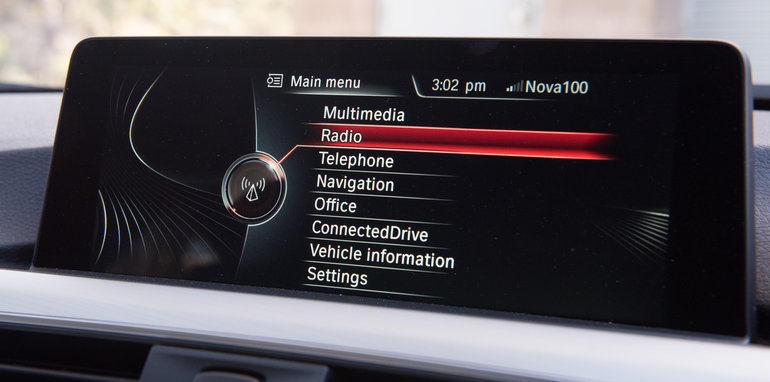
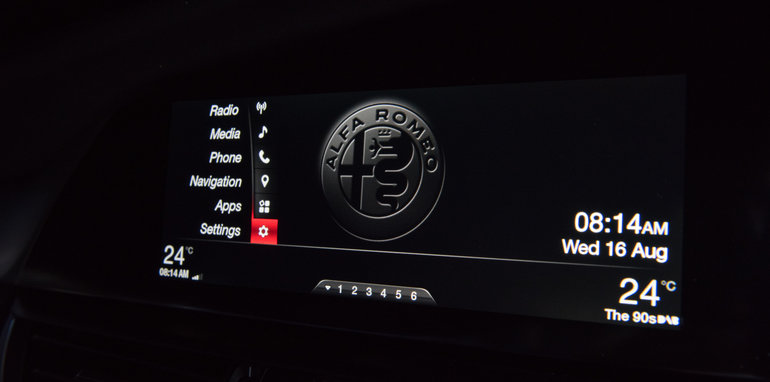
Both the Alfa and Bimmer have 8.8-inch screens controlled via a rotary dial, 19-inch wheels, and some form or adaptive/adjustable dampers (Adaptive Dynamics costs $1910 on the Jaguar), while the Jag has a 8.0-inch touchscreen and 18s as standard.
Both the Alfa and Bimmer also have leather seats, compared to the Jaguar’s ‘Luxtec and Technical Mesh’ seats – a material pitched as being superior to the regular real leather on lower XE grades.
The Alfa alone has standard active cruise control and the biggest stereo here (400W, compared to 380W for the Jaguar and 100W for the BMW) as well as a limited-slip diff. The BMW alone adds a head-up display giving you a digital speedo), a 20GB hard drive, LED headlights and ‘Dakota’ leather seats. The XE is the only car here with an electric steering column adjuster.
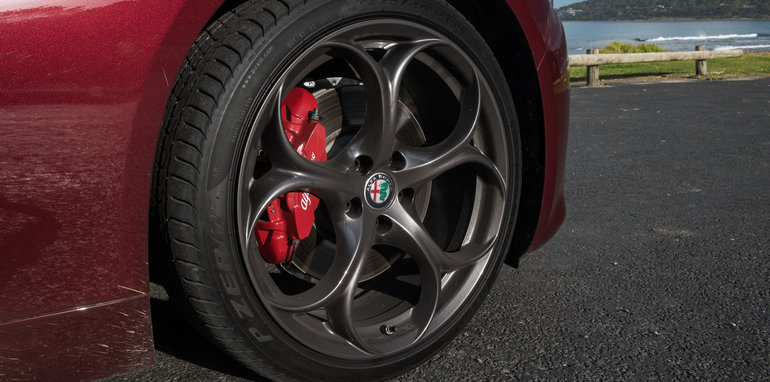
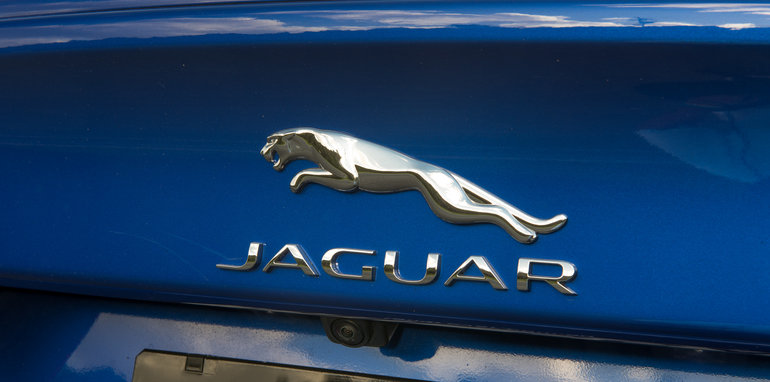
Our BMW test car had about $10,000 worth of options such as the $2597 Innovations package (Apple CarPlay, Parking Assistant and Active Cruise Control), and the $2600 M Sport Package (19-inch BMW M light alloy wheels, BMW Individual roofliner Anthracite, Driving Experience Control with Sport + mode, a M leather steering wheel and more).
There’s also its polarising Variable Sport Steering system ($400), a sunroof ($2920), seat heating for the driver and front passenger ($850) and a headlight washer system ($500).
Jaguar Australia has developed something of an addiction to options, and the XE tested here is no exception – our tester had almost $19k worth, which is bordering on ludicrous.
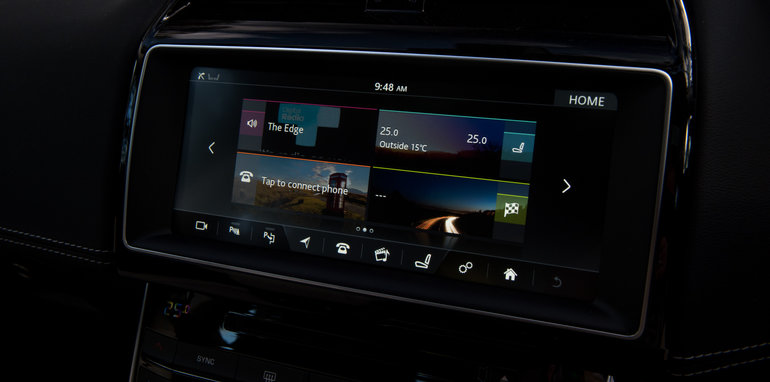
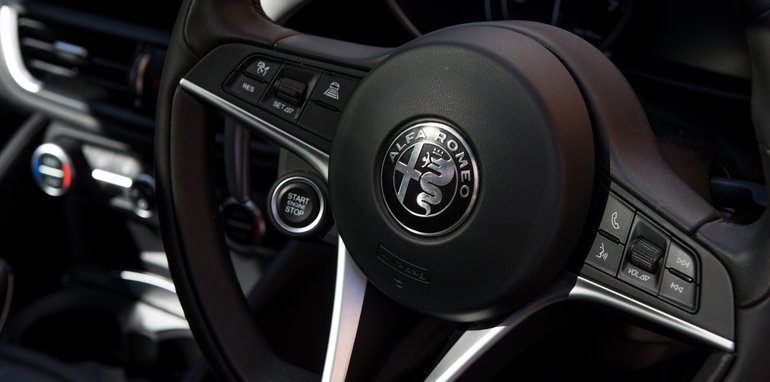
Examples include the InControl Touch Pro Pack with an uprated 10.2-inch capacitive touchscreen and 825W audio system ($3760), Perforated Taurus leather sport seats ($2220), Adaptive Dynamics ($1910), 19-inch Venom black wheels ($1850), panoramic sunroof ($1850), head-up display ($1820), electric bootlid ($880), gloss black bits ($730), set heating ($640), electric rear sunblind ($720) and DAB+ radio ($560).
The Alfa’s options list is comparatively meagre. You can have an uprated 14-speaker Harmon Kardon audio system to rival the Jag’s Meridien unit ($900), yellow calipers ($700) in place of our car’s red ones, dual-pane sunroof ($2200) and Tri-Coat paint ($3500).
Clearly the BMW and Alfa take the early ascendancy, and we hope the MY18 Jaguar XE update gets some more kit!
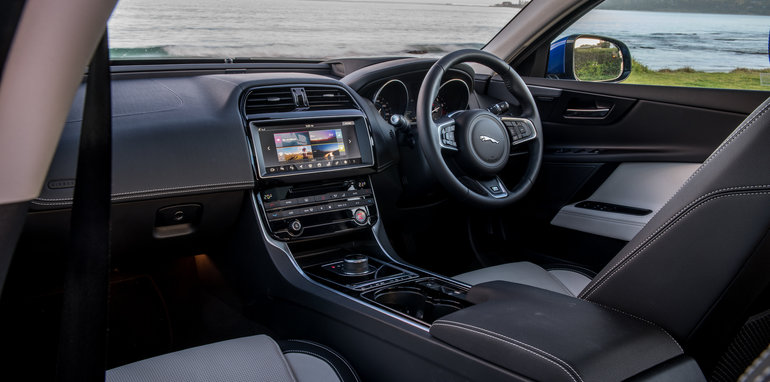
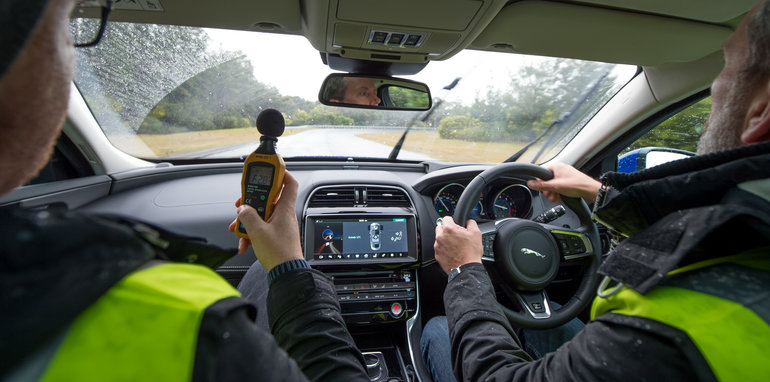
Cabins
The Jaguar’s cabin has some absolutely wonderful elements, and a few shockers. Case in point, the chunky leather steering wheel is gorgeous in the hand and has electric adjustment on the column, but audio buttons and shift paddles that feel like they belong on a Nissan Micra and fairly old-hat driver’s gauges.
The whole array is geared towards dynamic driving, because you sit low with your feet straight out, wrapped-up by the snug cockpit, ensconced in well-bolstered buckets. It feels like driving a coupe, lean and low, with ample seat/wheel adjustments and generally good ergonomics.
There are myriad small touches that go a long way, from the small Jaguar logos on the air vents, felt-lined cubbies and that leather dash cowl that wraps around you. On the down side, the plastics on the centre fascia aren’t great, the neon green backlighting isn’t premium and the head-up display feels a generation old. Don’t buy it.
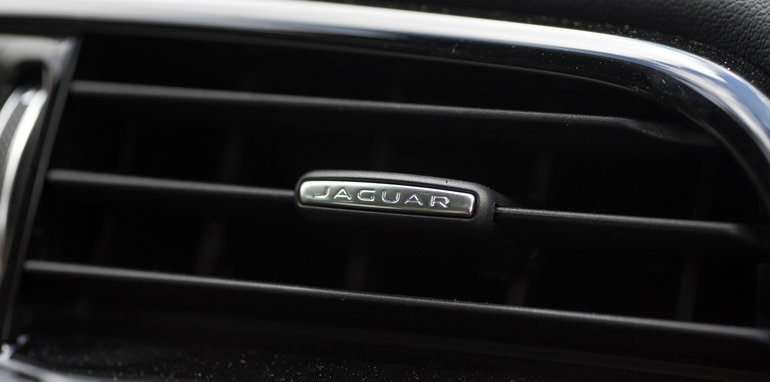
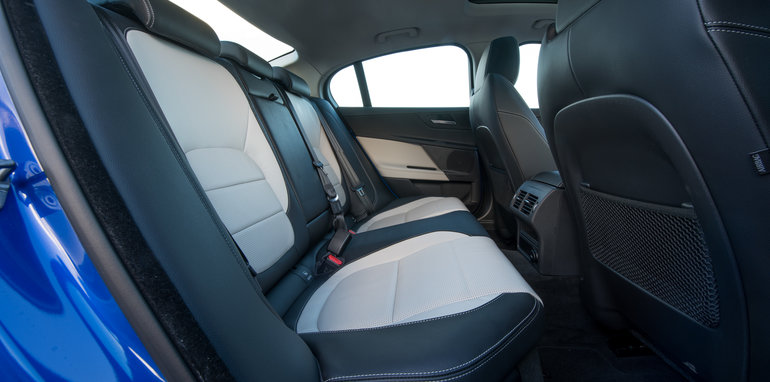
The regular 8.0-inch screen is below-par for the class, but the optional 10.2-inch screen with HDMI input fitted to our tester is delightful. Sure, the home screen graphics still look like Clip-Art, but the loading times are rapid and the interface is positive.
The uprated audio system is good, too, though sounds somewhat artificial (DSP-laden). The voice control system is also pretty iffy.
We also reckon the Jag has the worst back-seat space here – that coupe vibe remains – with modest rear headroom and legroom. That said, most buyers of the XE are surely usually driving two-up at most, or with two kids (there are ISOFIX anchors, of course).
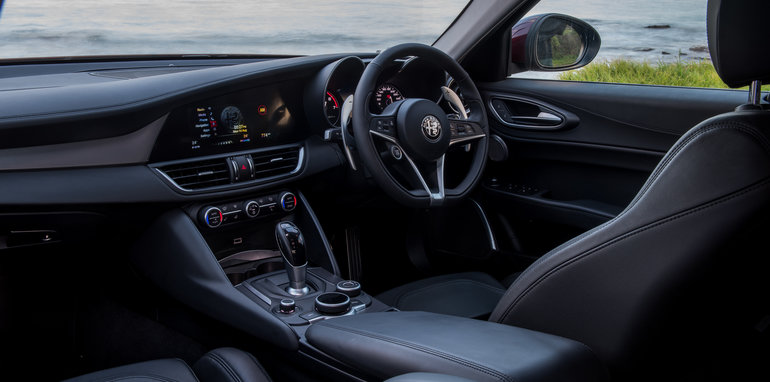
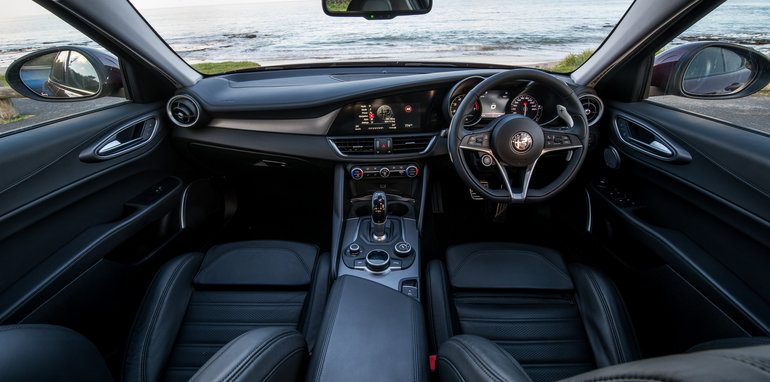
The Alfa has a few things going for it right off the bat. Its leather seats are the best here – tactile, brilliantly bolstered, and proudly wearing logos. It also has the most superlative paddle shifters (fixed to the column) this side of a supercar and a novel starter button on the steering wheel. Win, win, win.
The material mixture is interesting though, because some of the plastic on the transmission tunnel and doors, and the gear-shifter, is particularly dire, taking away points gained from the leather and the cool faux carbon-fibre inserts. Ditto the old-looking font on the digital speedo.
Night owls will notice the dark, minimal cabin ambient lighting and may be perturbed by the mix of LED and non-LED lights.
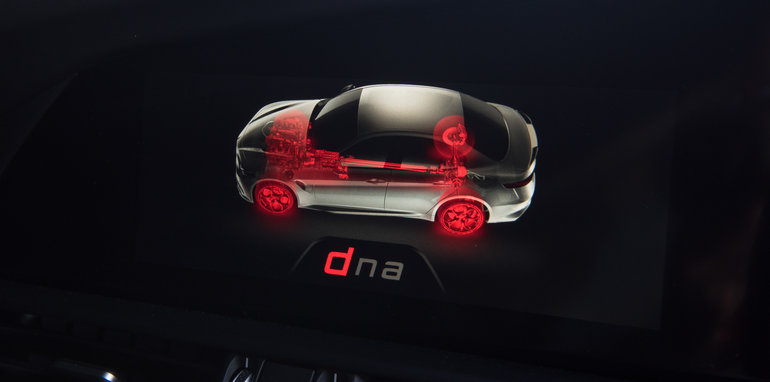
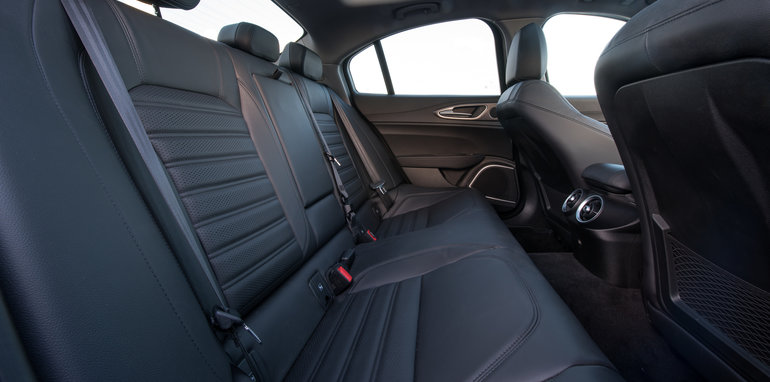
The audio system looks the goods on paper but in reality is actually a bit muddy in quality, the centre touchscreen is basic in its design and layout (but will Alfa purists care?) and our tester’s dual-pane sunroof is a great addition that doesn’t hurt rigidity.
Meanwhile the room in the back is slightly better than Jaguar and there’s a USB input, too. That, plus the rounded air vents looks a treat, as does the ribbed leather seat trim that has the right pitch.
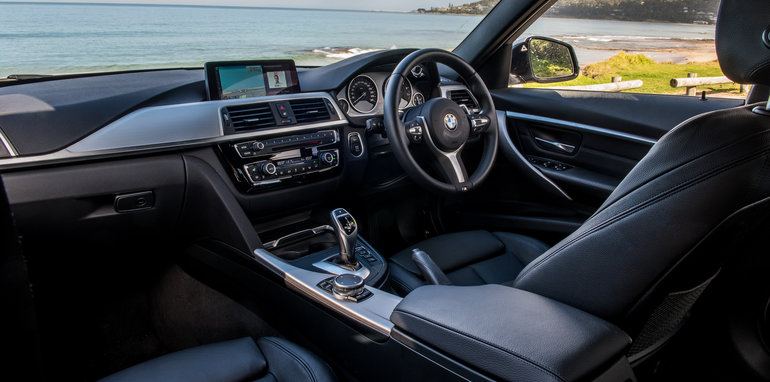
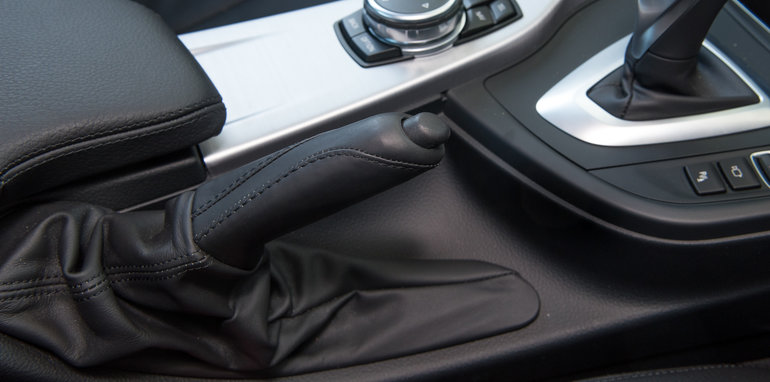
There’s a lot of conventional touches inside the BMW, headlined by the ‘classic’ orange lighting that I love but Alborz loathes, and the presence of a real handbrake.
We dug the rubberised buttons, great standard head-up display, the ergonomics, the usability of the iDrive 5 system (soon to be upgraded to iDrive 6 on new cars, alas not downloadable for older models), the understated design and the high-resolution tablet screen fixed atop the dash, with class-leading nav software and handy configurable shortcut buttons.
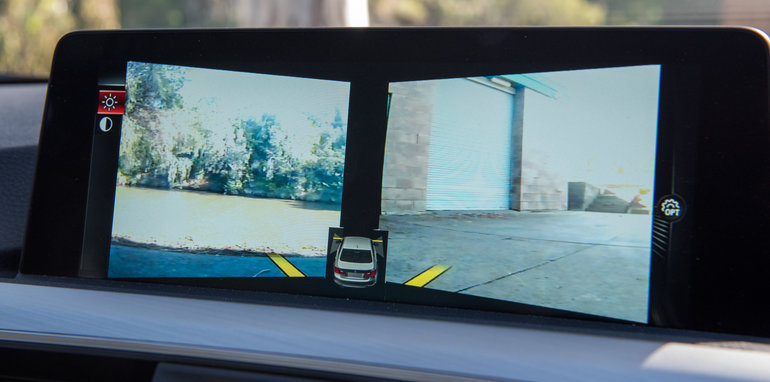
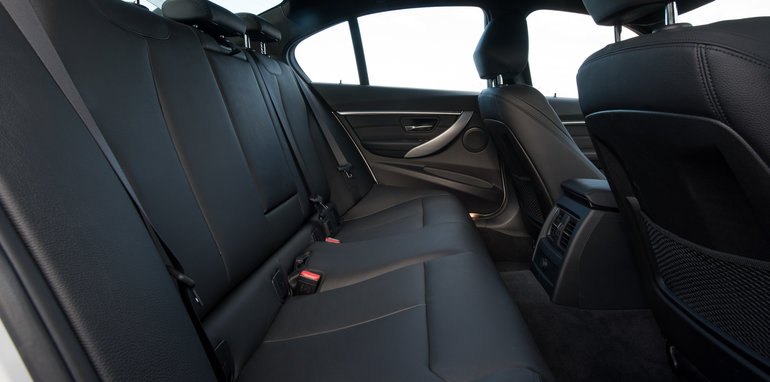
Typical traits are here: the modest audio system actually has a sound that is clear, the door trims and everything else is flawlessly put-together, the paddles and gear shifter are austere but reek of quality, the leather is hard-wearing, the plastics tougher than Lego (aside from the cheap-o vents and the bizarre snapping phone cradle thing that’s a long-running feature in BMW centre consoles).
The BMW’s rear legroom in really good for the class, with big doors/aperture and ample leg- and headroom, albeit modest foot space under the seats. It’s still narrowly the comfiest in the rear. All agreed.
The BMW 330i cabin wins, then, and it’ll only get better in MY18 guise. The Alfa frankly feels vaguely like a knock-off, though it has the best seats and paddles here, while the Jag has a great sporty driving position, but some cheap-feeling bits and average infotainment – unless you’re willing to fork out extra.
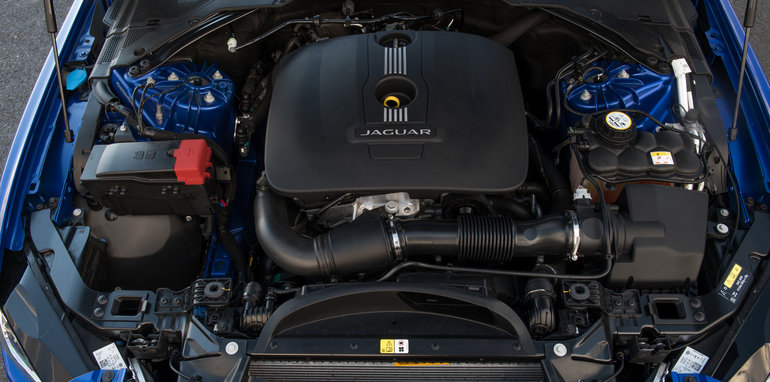
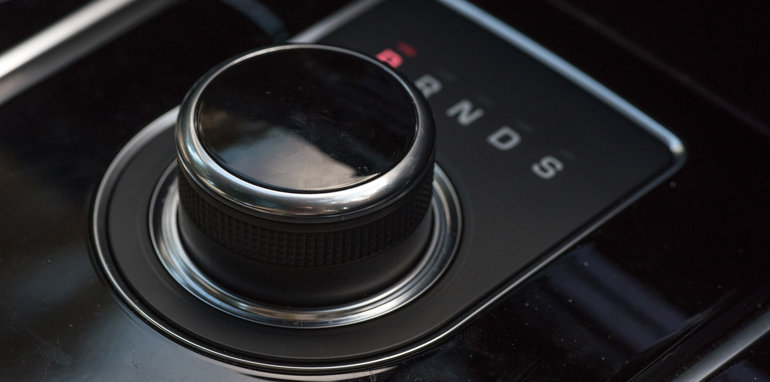
Drivetrains
All three vehicles on test use 2.0-litre turbo-petrol engines, kicking off with the Jag’s soon-to-be-replaced Ford unit punching out 177kW of power at 5500rpm and 340Nm between 1750 and 4000rpm, enough to propel the Brit from 0-100km/h in 6.8sec.
Next in line is the BMW’s TwinPower unit with fully variable valve control, making 185kW at 5200rpm and 350Nm between 1450 and 4800rpm, sufficient to punch the Bimmer to 100km/h from static in 5.8sec.
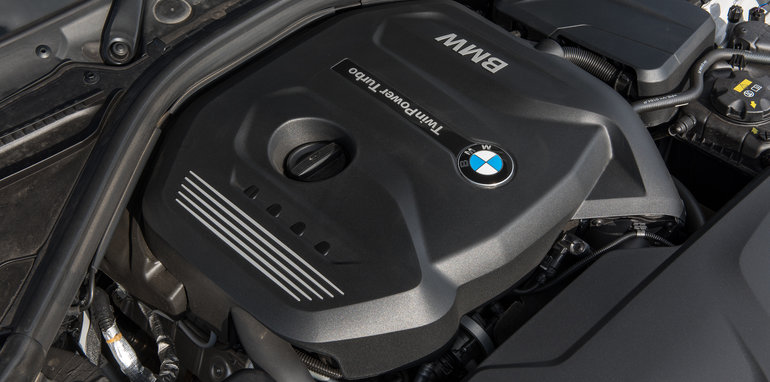
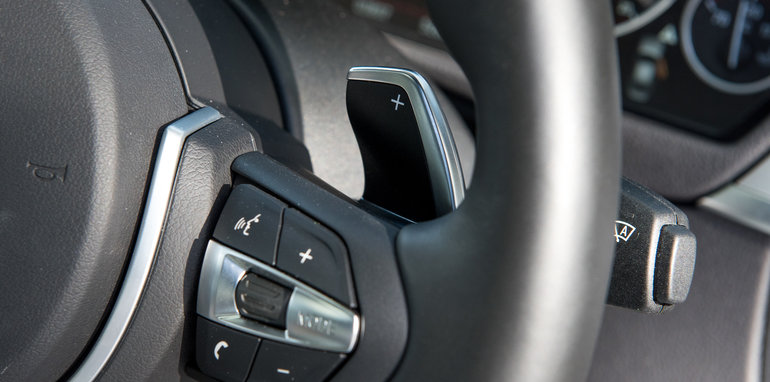
Yet the Italian Stallion shades it rivals with a newly developed Euro 6 aluminium unit making an impressive 206kW at 5250rpm and 400Nm at 2250rpm (more torque than the others, later in the rev band). This upscaled version of the base car’s engine propels the car to 100km/h in 5.7sec.
Now we hear you, the Jag sounds like quite the outlier. However you may wish to know that the MY18 model due right at the end of the year is a new in-house JLR unit from its Ingenium family, making 184kW/365Nm and cutting the 0-100km/h time to a much more impressive 6.3sec.
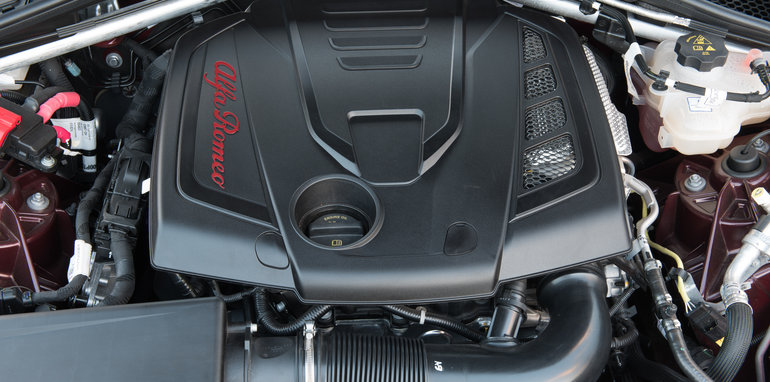
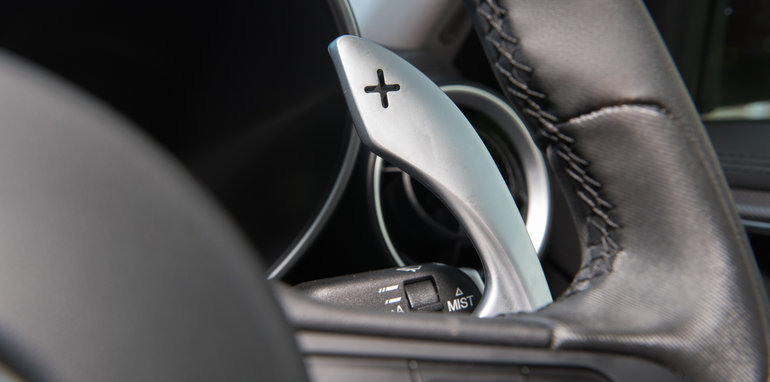
The claimed sprint times were relatively indicative of what we found, though the BMW proved easier to launch in a brutal fashion (left-foot braking, in Sport + mode, then throttle-stomping) and in that situation actually nosed the Alfa. It also has a more evocative note than either the Giulia or Jag.
In terms of rolling response, the Alfa and BMW do feel a notch above the XE, but the upgrade to Ingenium power should rectify this.
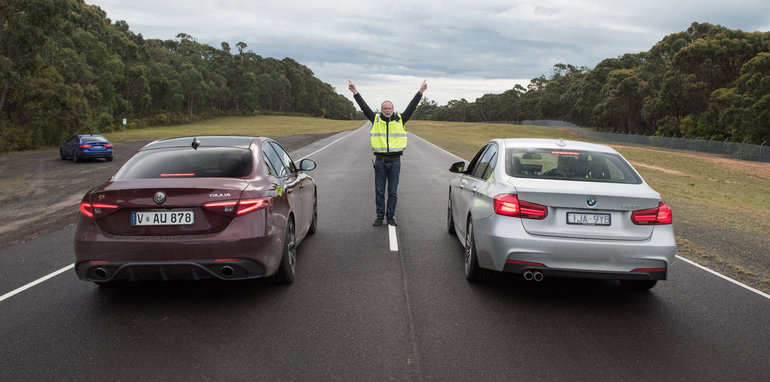
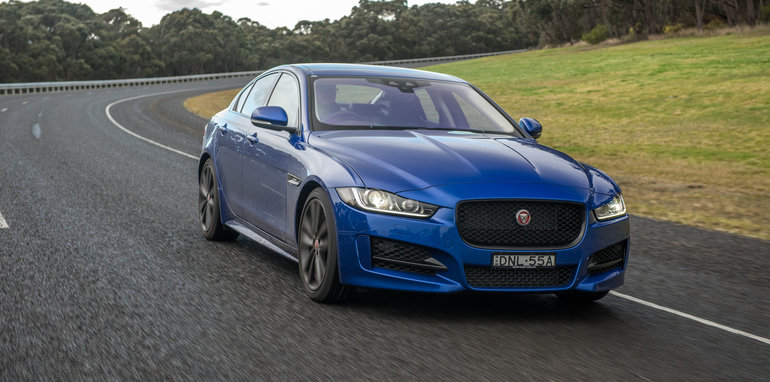
Indicative of modern automatic parts-sharing, all three cars use an eight-speed automatic transmission with a torque-converter, sourced from German supplier ZF. The Jag has the first-generation (8HP45) unit and the Alfa/BMW have the second-generation unit (dubbed 8HP50).
It’s all down to tuning, though. The BMW’s setup is absolutely seamless, capable of doddling about in comfort mode and holding on ratios longer or rapidly downshifting in sportier setups. It’s never jerky or hesitant, always decisive, and generally obedient in manual (where it revs out higher than the toned-down Alfa).
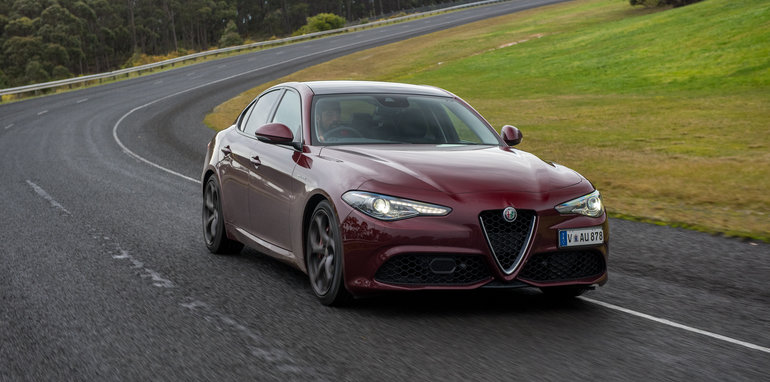
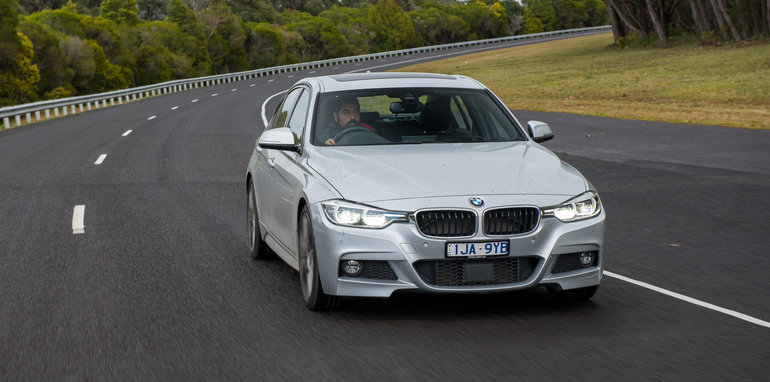
The Alfa’s drivetrain feels relatively cohesive and is assuredly a good effort, helped by the drama of the wheel-mounted starter button and the glorious paddles shifters.
The Jag’s gearbox never really feels particularly suited to the engine, with notable moment of hesitancy and fussiness, and slurred shifts where the BMW’s are crisp. The dial that rises from the transmission tunnel and the cheap paddles also detract from the joy.
It’s the BMW again, guys.
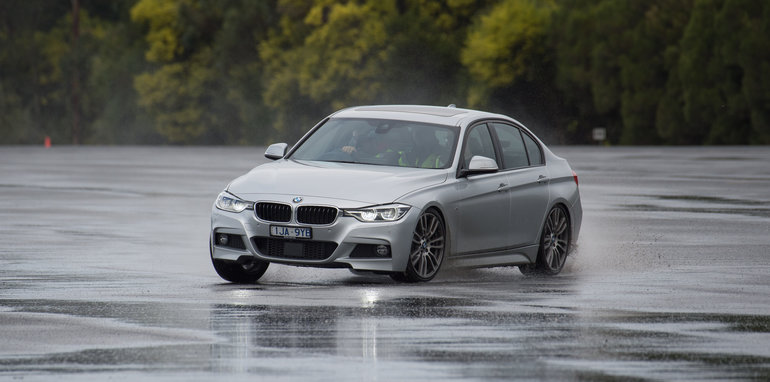
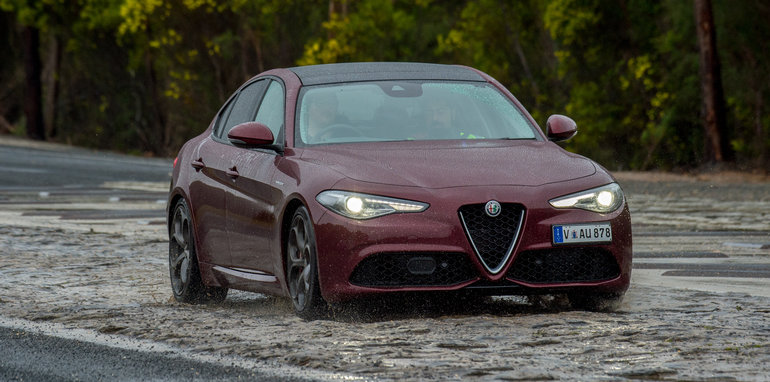
Dynamics
We conducted a few great dynamic tests, including NVH monitoring on the high-speed bowl, standing sprints, 80km/h to zero braking comparisons, ride quality control over Belgian Blocks, and sans ESC lunacy on a giant skid-pan. Wa-hoo.
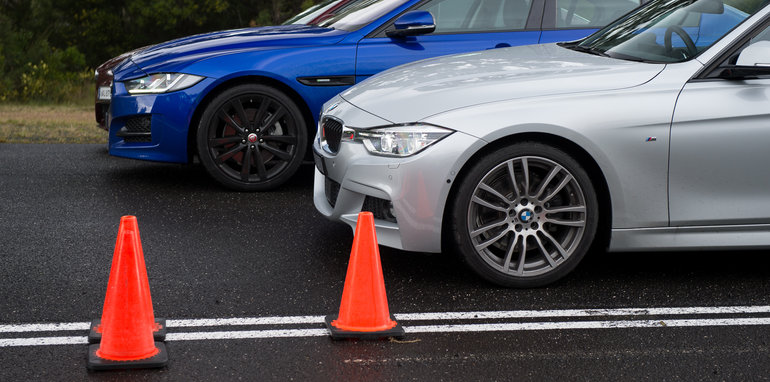
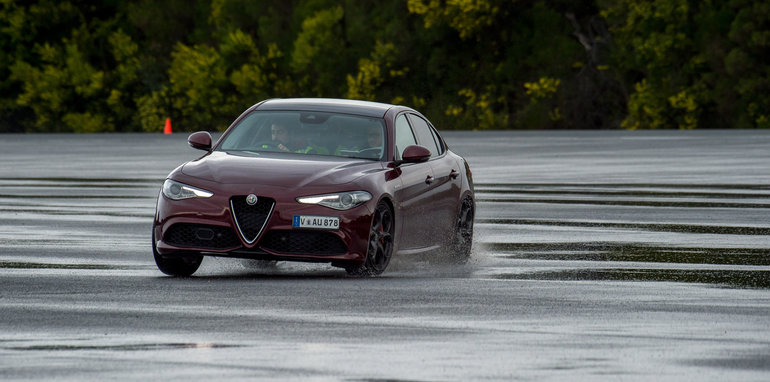
The key point to take away from this test is that all three cars here are designed as being overtly ‘sporty’ propositions. BMW makes self-proclaimed ‘ultimate driving machines’ and the other two are pitched as alternatives.
By-and-large, all three do deliver on this promise. No car here lacks chassis balance, taut body control against lateral inputs and a sense of edginess, without twitchiness.
The Giulia did a lot of things well. It’s very good at urban comfort, with class-leading noise suppression according to our Db meter, and a relatively compliant, even supple ride in the right mode and setting. Its super-quick steering, with only 2.2 turns lock-to-lock, is also breezy in daily duties.
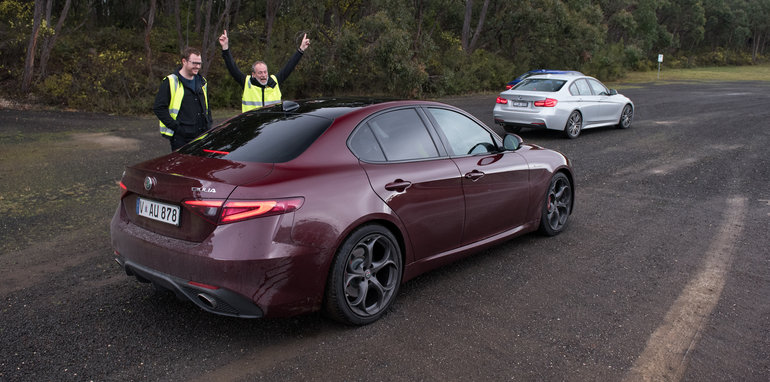
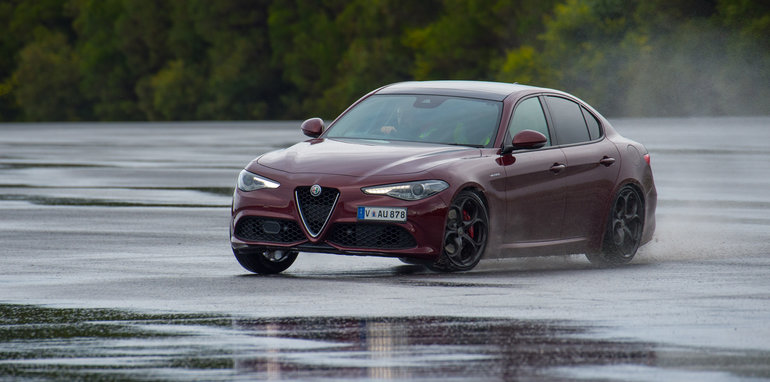
Additionally, its P Zero tyres are high-end indeed, its brakes are notably effective, and its traction control/ESC proved adept and subtle on the skidpan (though you can’t turn it fully off). Full lock under heavy throttle elicited neither overt oversteer or understeer (yes, we know it’s RWD).
On the down side, the damper tune is compromised on a broken road surface, where we found the car’s ride quality fell away the most here. Not only did the wheels fall into big ruts, but they tugged the body around too, throwing out the handling and stability.
Additionally, the quality of the electric-assisted steering falls away under more aggressive driving. It doesn’t load-up effectively at speed, and that quickness turns to twitchiness. It doesn’t inspire confidence because it doesn’t communicate. Just like a bad husband.
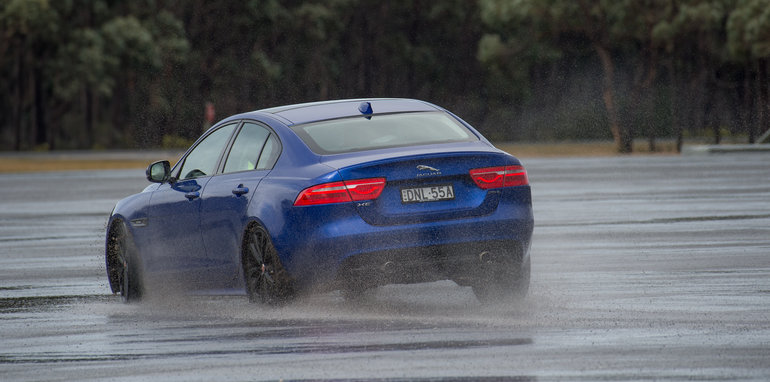
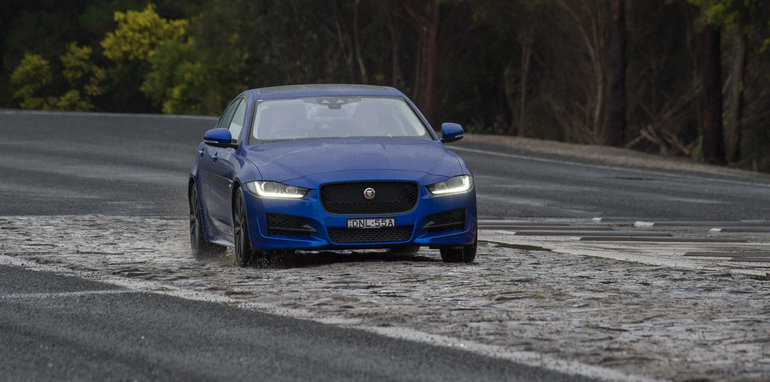
The Jaguar’s electric steering is nothing short of sublime, with plenty of feedback and engaging response from centre. The steering is lighter than the BMW’s (not the Alfa’s) and requires less lock – though sometimes you want lock.
In tandem with the excellent chassis stiffness, and the well-sorted and complex rear suspension, it makes for a great driver’s car in capable hands (ergo, not the author’s).
The suspension also proved competent, at least BMW-matching, under duress, with great rebound qualities evidenced by the fact that the car doesn’t get thrown off by mid-corner hits.
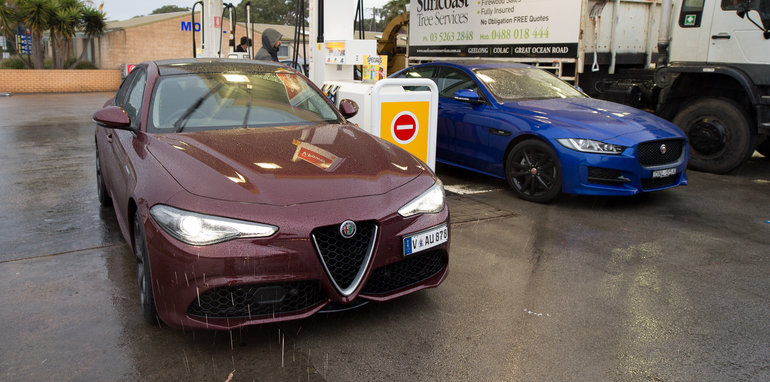
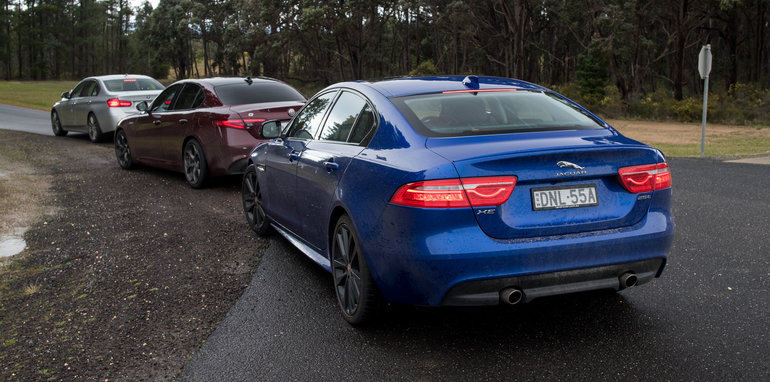
On the downside, it’s stiffer and more brittle over B-roads and cobbles than the Bimmer (in comfort mode), and when you’re really getting ‘up it’ the car turns a little ragged.
With the ESC disengaged the Jag was sliding around on its Dunlop Sport Maxx hoops like a maniac, and often proved hard to catch. Then again, we ain’t racing drivers. If we were, we wouldn’t be journos.
The Jaguar and Alfa came about equal in our 80-0km/h braking test in the damp, with the BMW edging both by 50cm and feeling the most stable.
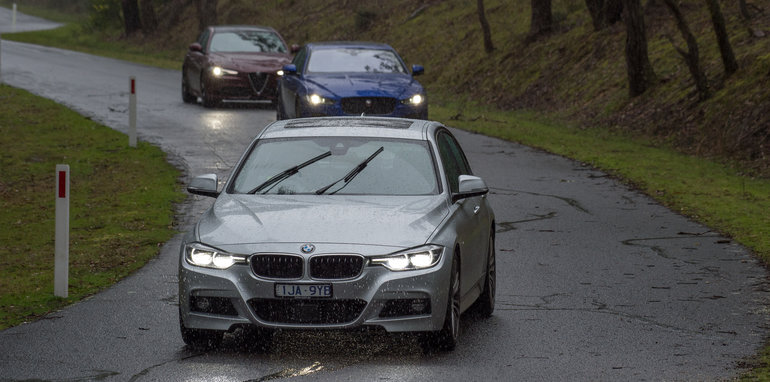
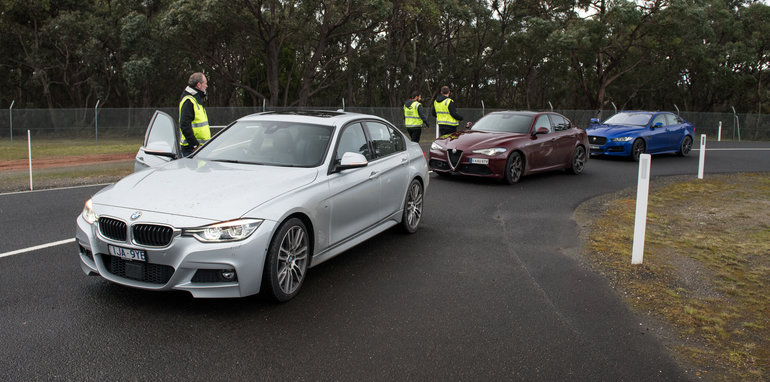
Once again the German proved to be the best all-rounder – and not just by way of its braking.
In comfort setting the dampers soften up noticeably, with the sedan offering commendable comfort and refinement in daily duties, mixed with ideal body control and Autobahn-taming refinement and stability on the straight-ahead.
Under more dynamic driving it feels typically surefooted, offering predictable oversteer that won’t snap and bite you on the arse, even with the ESC off. In fact, if anything, it’s too sorted. Maybe that’s the Bridgestone Potenzas…
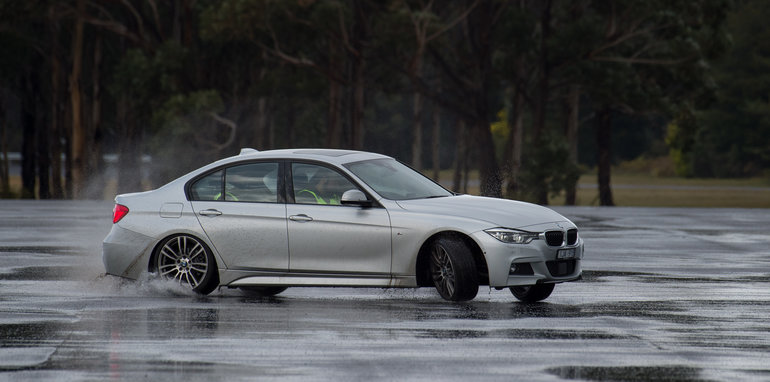
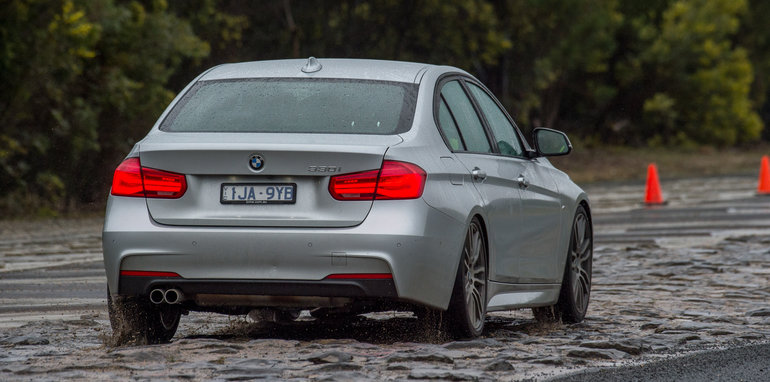
The Sport mode feels great, because you don’t crash noisily and stiffly over ruts, yet the body control tautens and the steering becomes artificially heavy and resistant.
The only real criticism is the vague sense of detachment at times from this Variable Sport Steering system, which we’d eschew when ticking the options boxes.
VERDICT
What a brilliant few days… If there’s one obvious take-away for us, it’s that testing at the AARC was one of the most enjoyable driving experiences we’ve collectively had in some time, despite the typically miserable Victorian weather. It’s a jewel of a place.
The Alfa Romeo Giulia Veloce is a pretty stellar effort in a lot of ways, putting to bed any notion that the company might phone-in any product not badged ‘Quadrifoglio’. It’s gorgeous, has a lot of great cabin elements, is well-specified and powerful. It’ll lure a subsection of buyers with its badge, but there’s certainly substance there too, though there are some sub-par cabin trims and dynamic issues we’re not keen on.
As we’ve been at pains to lay out, the timing of procurement for the Jaguar wasn’t ideal, because of the MY18 model coming, though we can foreshadow the necessity of the new Ingenium engine to narrow the gap. There’s no doubt the Brit has the best steering in the class, wonderful chassis balance and undeniable cool factor, but it’s questionable value and isn’t as much of an liveable all-rounder as the Bimmer. The back seats are poor, too.
Sorry to those wanting an upset, but the BMW just feels like the most cohesive car here. Yes, it’s a little dull and ubiquitous, and we understand why you may go British or Italian. But the 330i has the best balance of ride/handling dynamism and comfort, the most engaging drivetrain and the cabin that offers the fewest pitfalls.
The carryover champion remains exactly that, and it’s typically humble about it. Flashiness isn’t necessary.
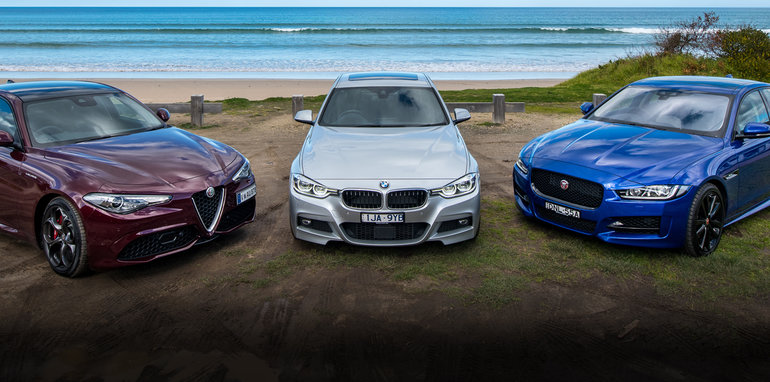
| Model |
Alfa Romeo Giulia |
BMW 3 Series |
Jaguar XE |
| Variant |
Veloce |
330i |
25t R-Sport |
| Price (MSRP) |
$71,895 |
$70,900 |
$68,900 |
| Made in |
Italy |
South Africa |
UK |
| Engine |
2.0 turbo petrol |
2.0 turbo petrol |
2.0 turbo petrol |
| Power |
206kW at 5250rpm |
185kW at 5200rpm |
177kW at 5500rpm |
| Torque |
400Nm at 2250rpm |
350Nm between 1450 and 4800rpm |
340Nm between 1750 and 4000rpm |
| Economy |
6.1L/100km |
5.8L/100km |
7.5L/100km |
| Transmission |
8AT w/paddles |
8AT w/paddles |
8AT w/paddles |
| Drive type |
RWD |
RWD |
RWD |
| 0-100km/h |
5.7sec |
5.8sec |
6.8sec |
| Top speed |
240km/h |
250km/h |
250km/h |
| Weight |
1490kg tare |
1457kg tare |
1476kg tare |
| Length |
4643mm |
4633mm |
4686mm |
| Wheelbase |
2820mm |
2810mm |
2835mm |
| Height |
1436mm |
1429mm |
1416mm |
| Width |
1860mm |
1811mm |
1850mm |
| Wheels |
19-inch |
19-inch |
18-inch |
| Front tyres |
225/40 |
225/40 |
225/45 |
| Rear tyres |
225/35 |
255/35 |
245/40 |
| Front suspension |
Double wishbone |
Strut |
Double wishbone |
| Rear suspension |
Alfa Link design w/ vertical rod link (patented) |
Multi-link |
Integral link |
| Active/adjustable dampers |
Yes |
Yes |
Yes |
| Boot capacity |
450L |
480L |
415L |
(caradvice.com.au, https://goo.gl/KJWN77)
